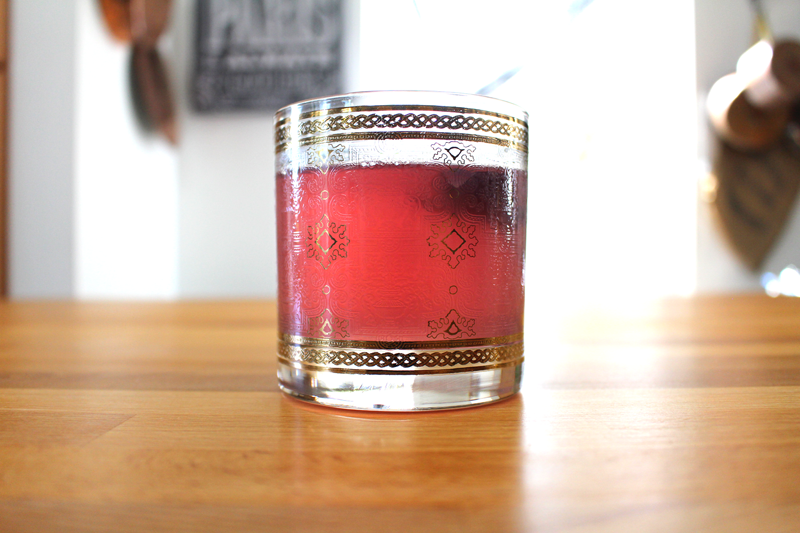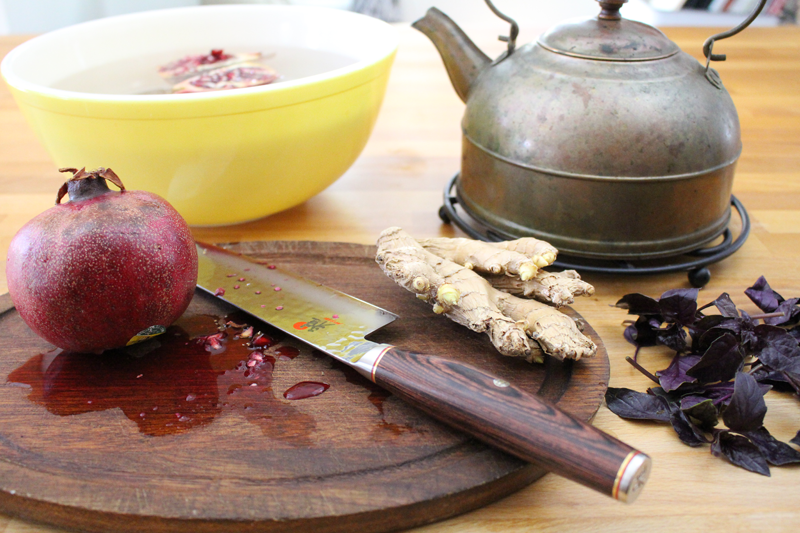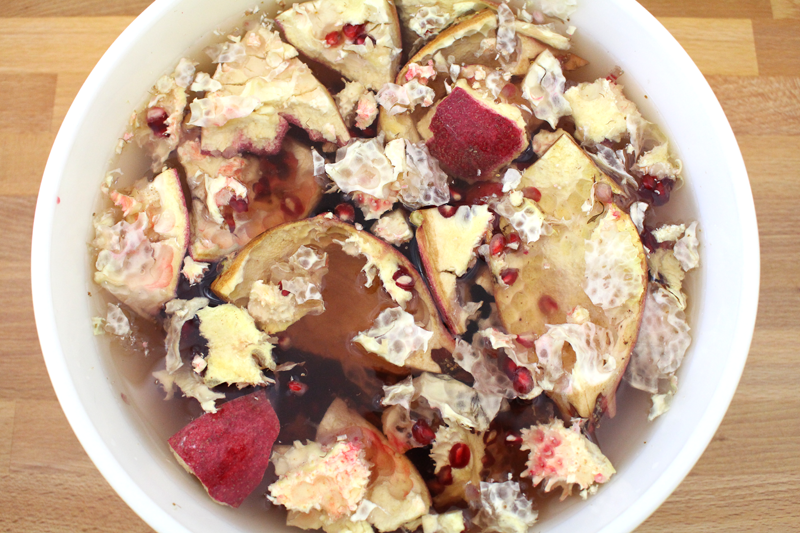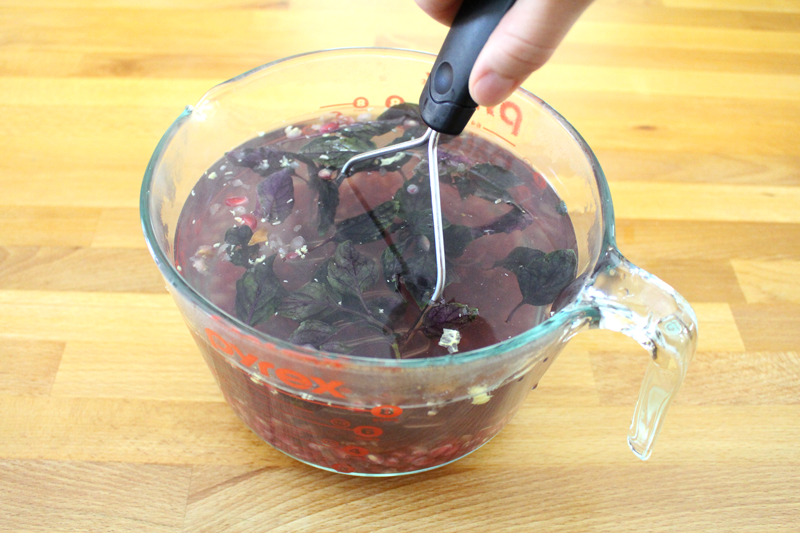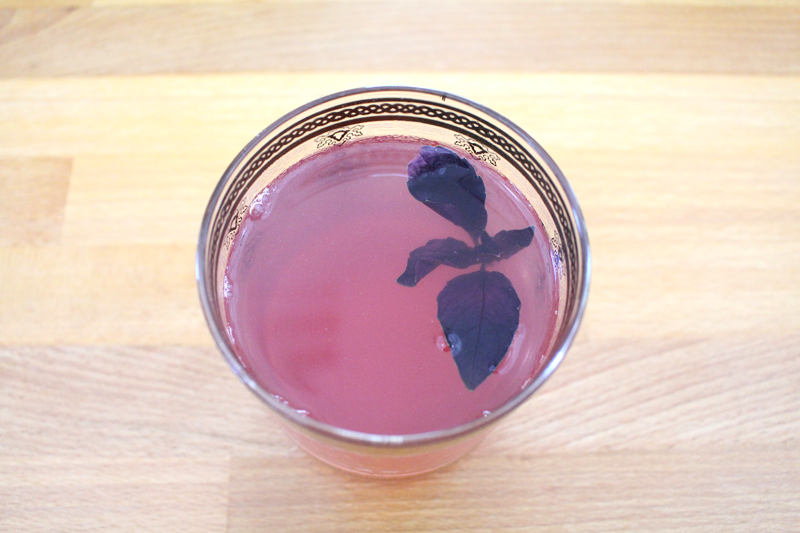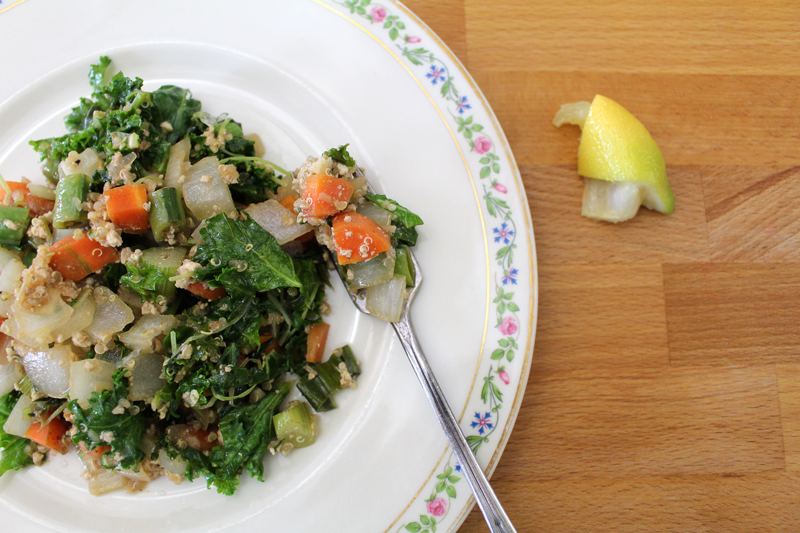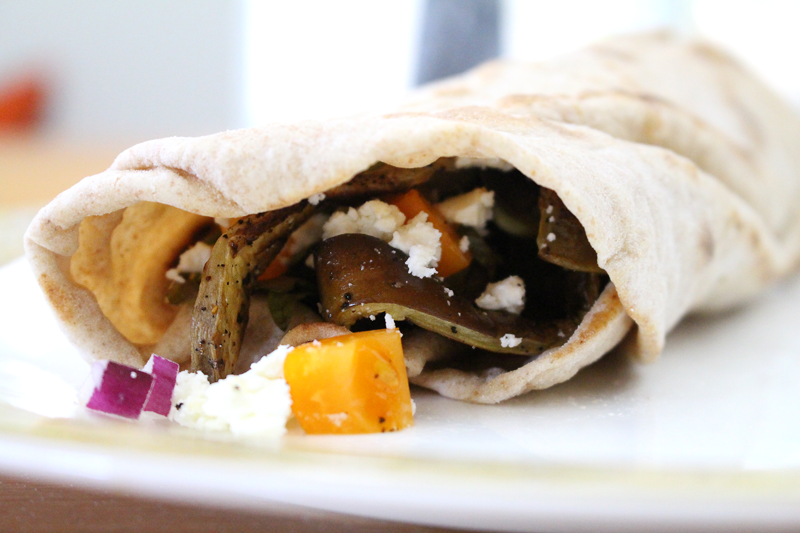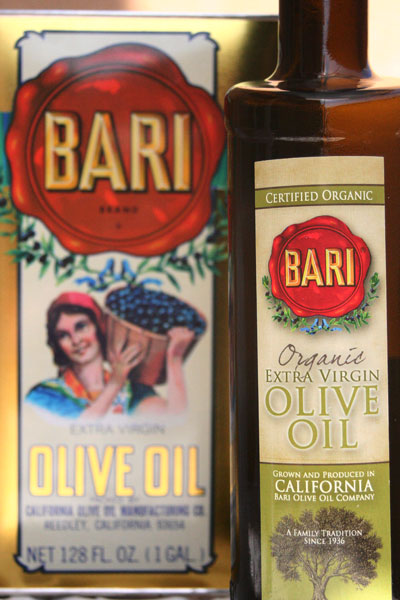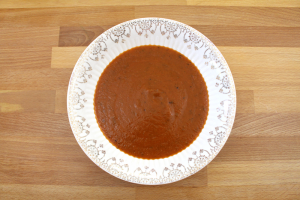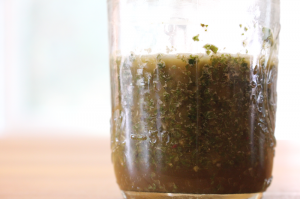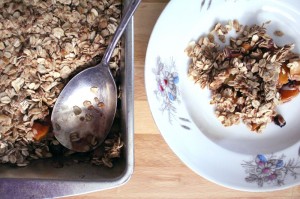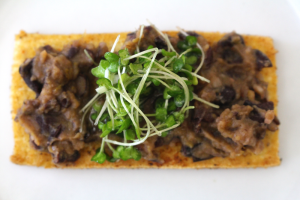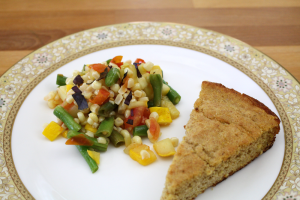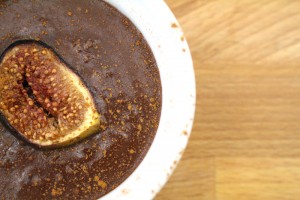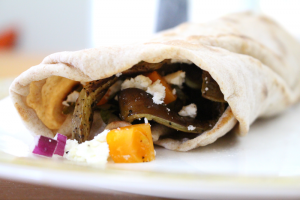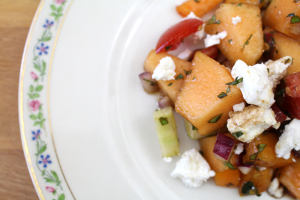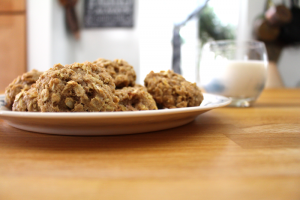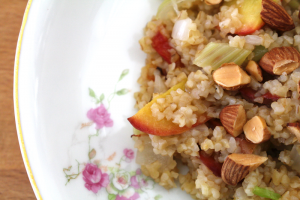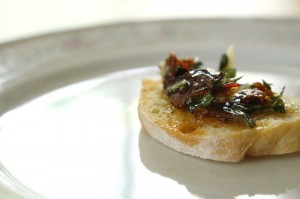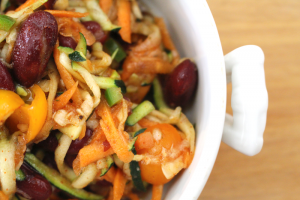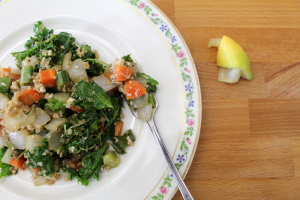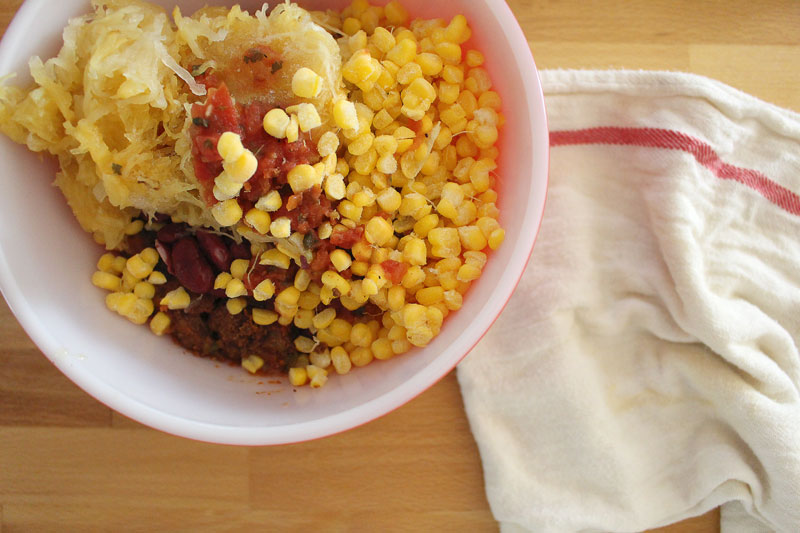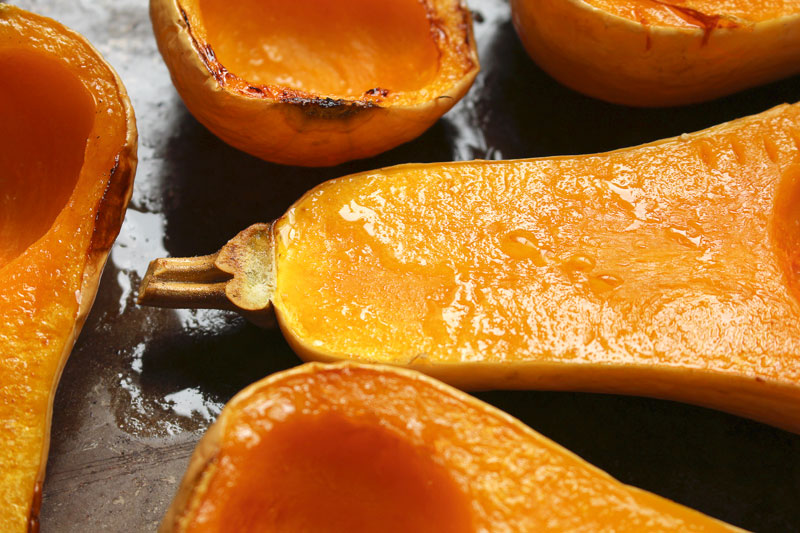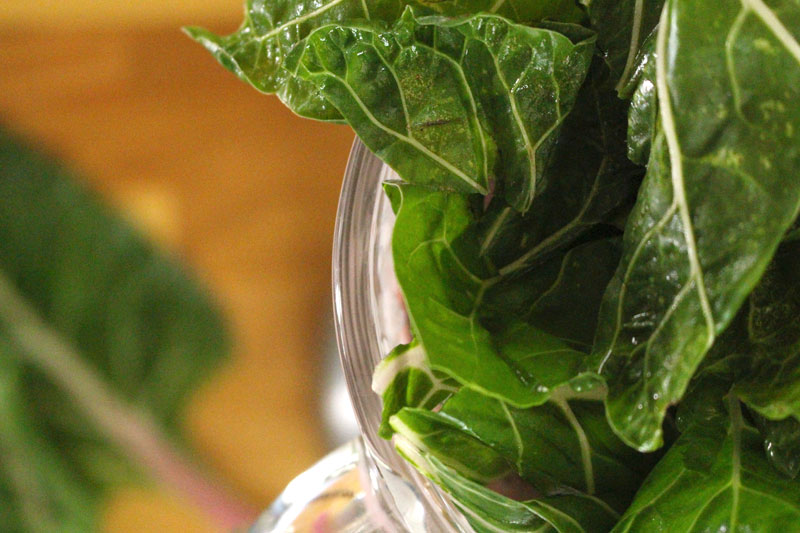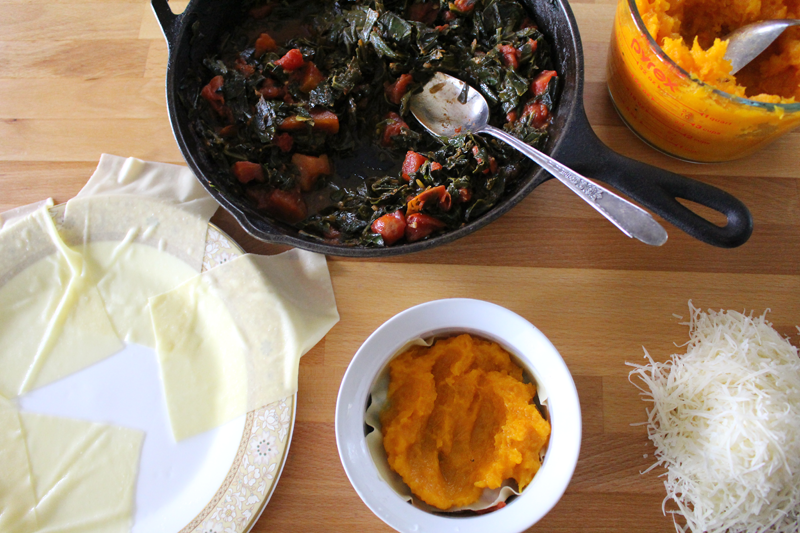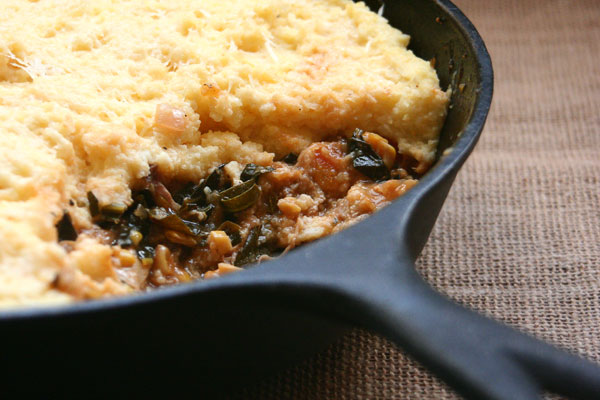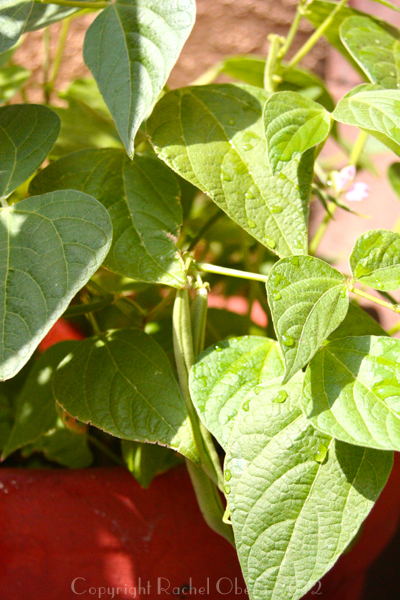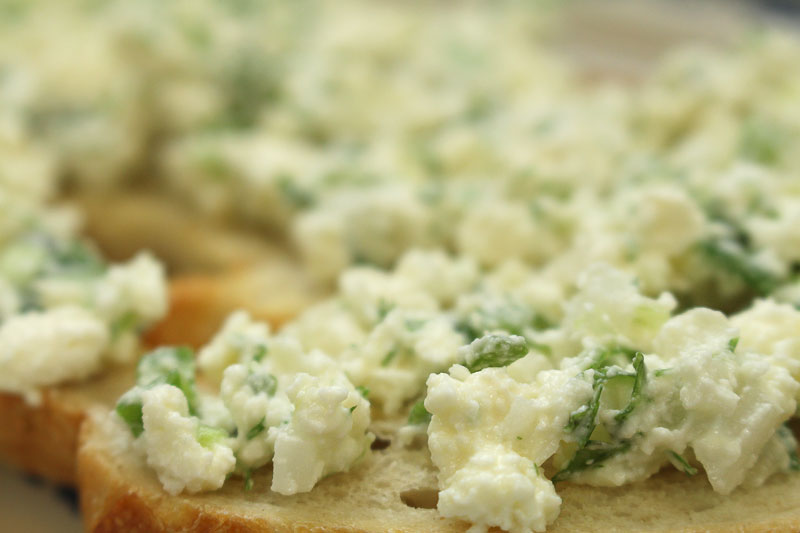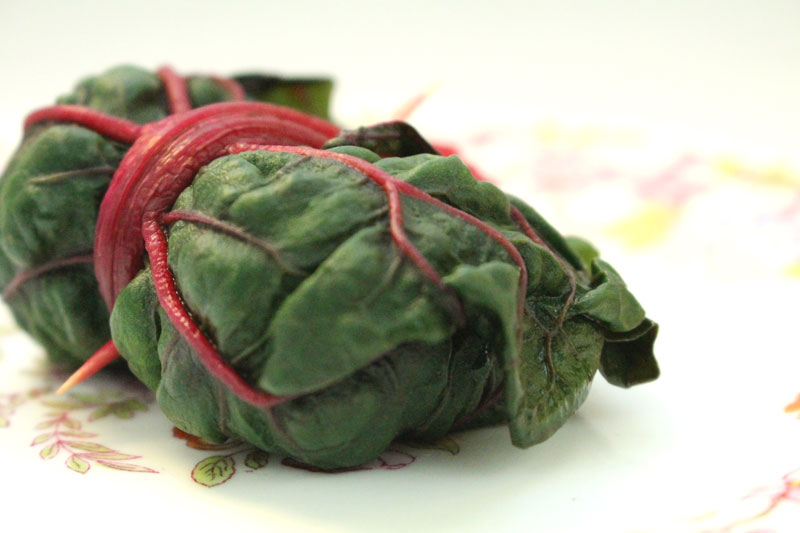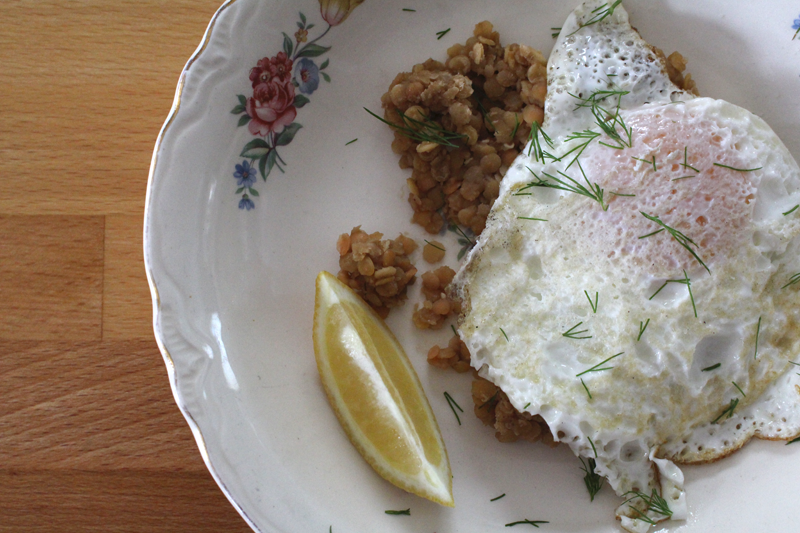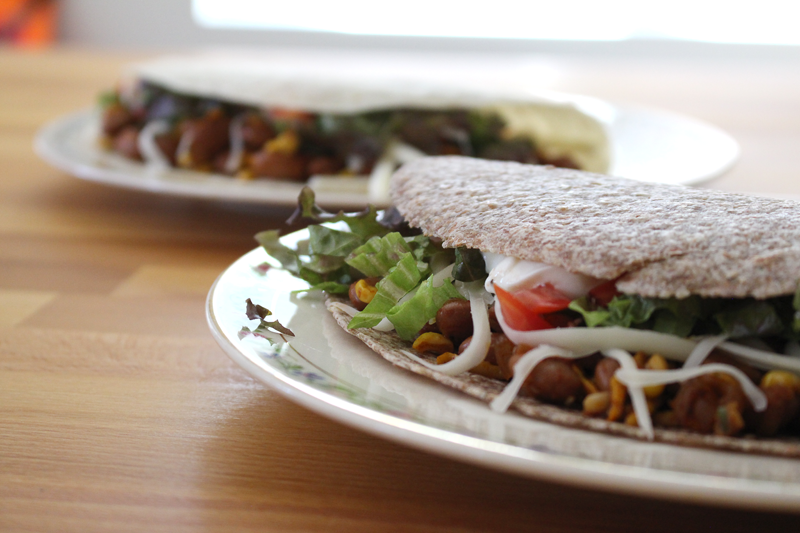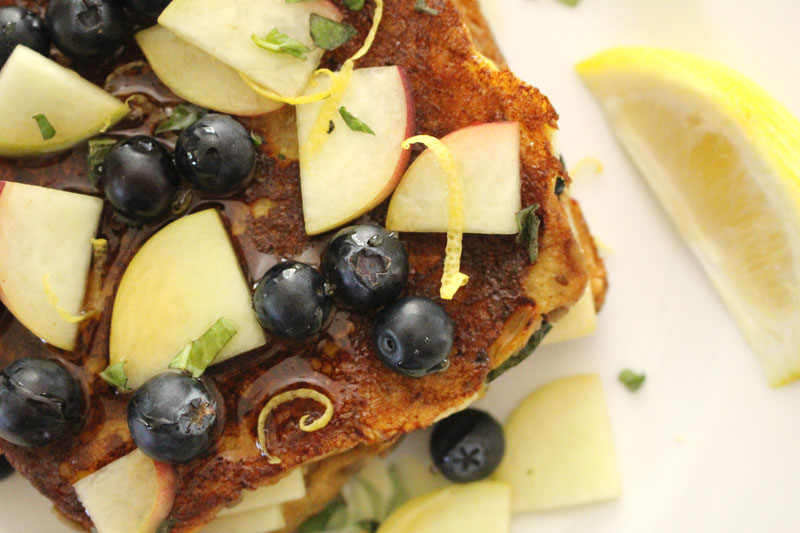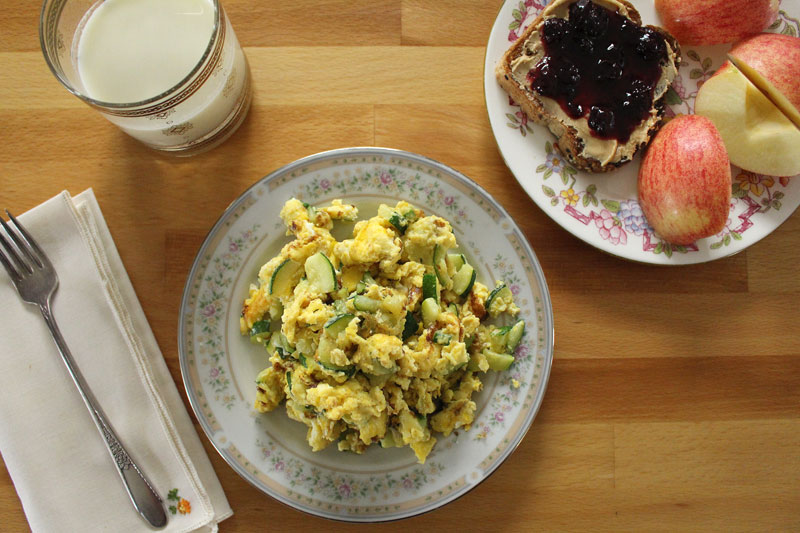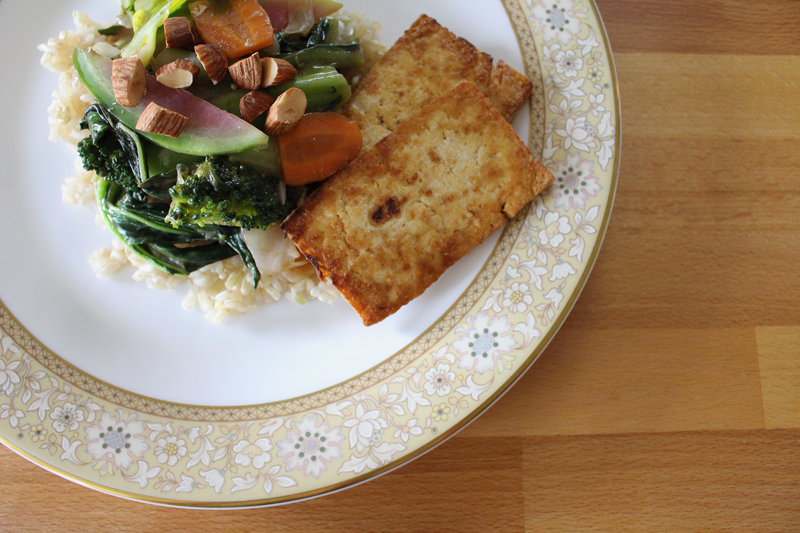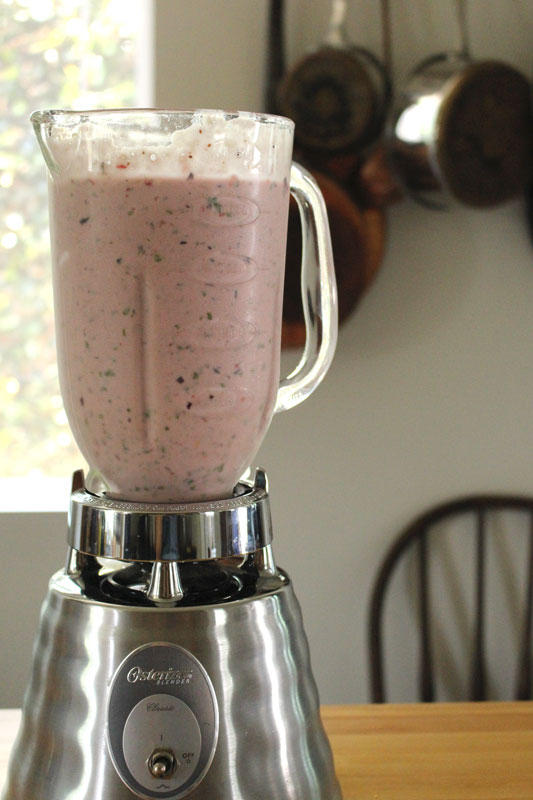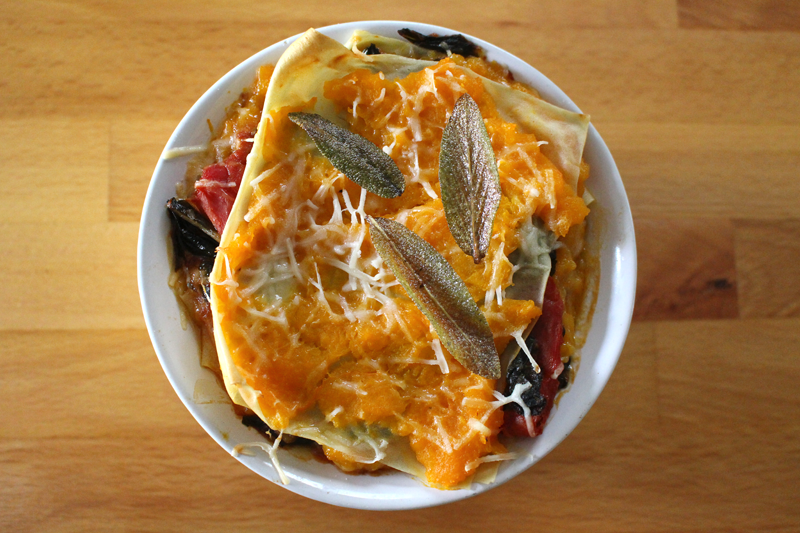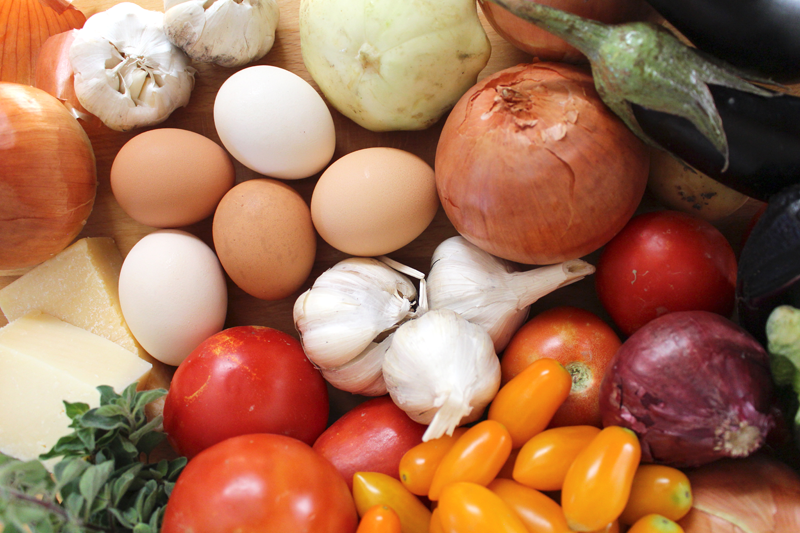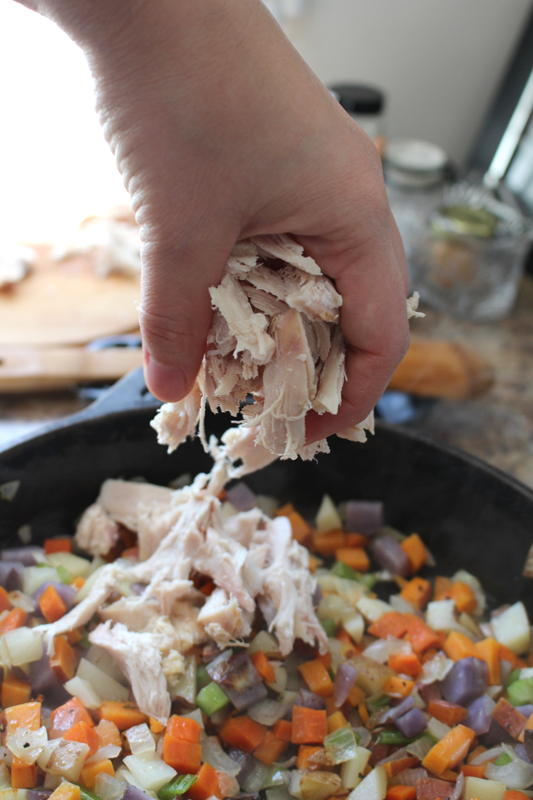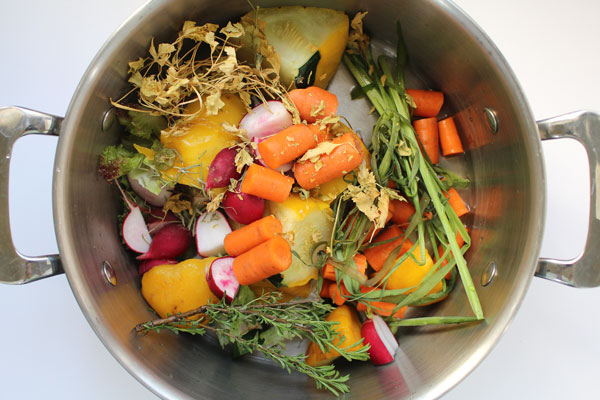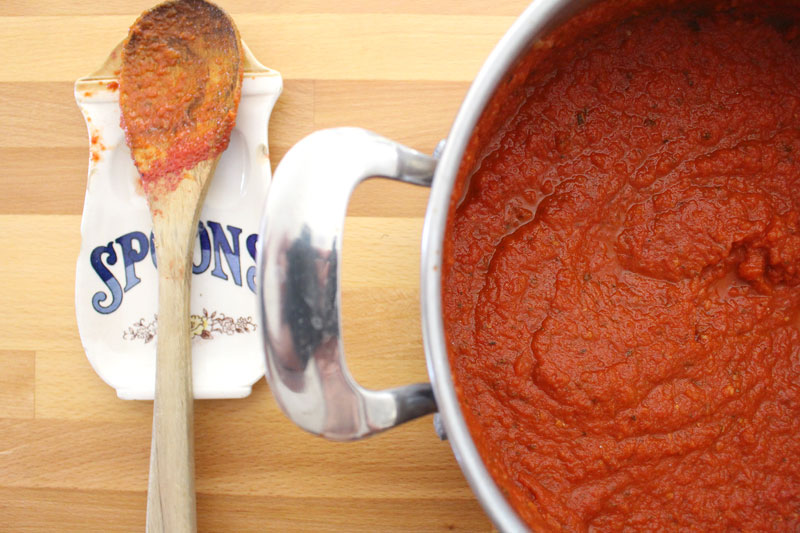Pomegranate and Purple Basil Iced Tea
Written by Rachel, Posted in Breakfast, Brunch, Cocktails, Dairy-Free, Drinks, Fruit, Gluten Free, Herbs, Vegetarian
When I think of basil, I think of things like pesto, soup, risotto… even french toast. I love basil so much that I grow it in my garden – I can never seem to get enough. It’s one of the best things about summer (and fall, at least around here). The smell is intoxicating. So when purple basil came in the weekly Abundant Harvest Organics box, it seemed like the perfect time to try something new with it. I made tea.
While basil is one of the stars of this tea, it has some pretty powerful co-stars: pomegranates and ginger. I like this combination for a few reasons.
- It’s fun to find something new to do with pomegranates. I sometimes have trouble using them up. This recipe used two whole pomegranates. Perfect!
- Ginger – spicy and flavorful, but that’s not all. Did you know that ginger is good for you? It’s great for the tummy and intestines. It’s anti-inflammatory, can help with nausea, and is said to reduce pain levels for individuals with osteoarthritis or rheumatoid arthritis. Ginger tea is diaphoretic (warms from the inside out), so it’s great if you’ve got a cold, or if you just want to warm up.
- On the healthy note, there are lots of studies going on about the many health benefits of pomegranates. They are being researched to find out their effect on things like free-radicals, memory, and even the common cold. Basil is also known to be a digestive aid, to help with headaches, and poor circulation. It’s also said to be an antioxidant, anti-viral, antimicrobial, and a stress reliever.
Great tasting, great for you.
To begin, those pomegranate seeds need to be removed from the pith or membrane (for a refresher on how to do this, check out last year’s post on deseeding pomegranates). Once they’ve been removed and the skin and pith discarded, the rest of the ingredients are added.
The seeds, ginger, basil, and honey are covered with boiling water and left to steep for a while.
Once the tea has come to room temperature, it’s mashed (to extract as much pomegranate flavor as possible) and strained.
After cooling completely in the fridge, it can be drunk as is with a sprig of basil for garnish.
Some fun twists: To serve it hot, either reheat the chilled tea, or just let it steep for a bit and then strain. I have a cold today, so I turned the leftover cold tea into a hot therapeutic tea. I added some more fresh ginger, a pinch of cayenne (helps me with congestion), and a bit more honey (soothes my throat) On a day when I’m feeling better, I might consider turning it into a cocktail (it could be used as a mojito base). Fresh lemons could also be added for a yummy take on lemonade.
Happy Sipping!
Ingredients
- 8 C water
- 2 pomegranates, seeds removed from peel and pith
- 2-3 t fresh ginger, diced
- 1/4 C purple basil
- (could also add mint or lemons)
- 1 T + 2 t honey (or more, to taste)
Instructions
- Boil water.
- Place pomegranates through honey in a heat-proof container. Pour boiling water over. Let stand until room temperature (unless serving hot - in that case steep until flavorful enough). Mash, then press through strainer and cool completely in the refrigerator. (Could freeze some in ice cube trays to use in place of ice for serving.)
Notes
Some fun twists: To serve it hot, either reheat the chilled tea, or just let it steep for a bit and then strain. Or, to drink when I have a cold: I turned the leftover cold tea into a hot therapeutic tea. I added some more fresh ginger, a pinch of cayenne, and a bit more honey. It could be used in a cocktail (it could be used as a mojito base). Fresh lemons could also be added for a yummy take on lemonade.

